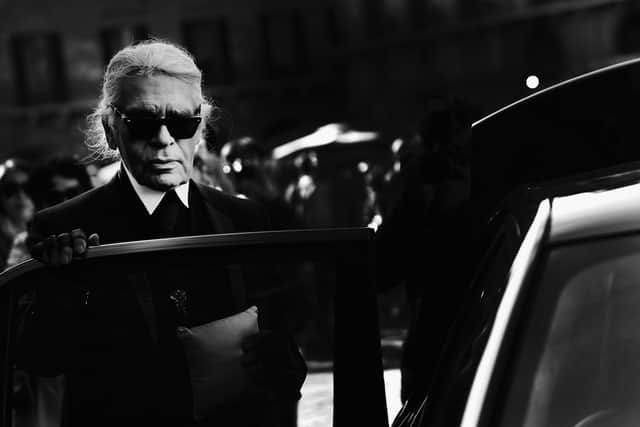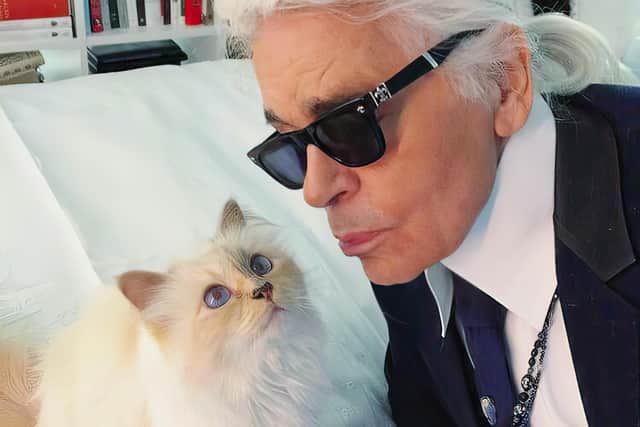The Mysterious Mr Lagerfeld reveals more about the designer 'behind the black sunglasses'
and live on Freeview channel 276
Having helmed Chanel from 1983 until his death in 2019, Karl Lagerfeld was one of the fashion industry’s most decorated and celebrated designers.
The son of a wealthy Hamburg businessman, Lagerfeld was initially hired as Pierre Balmain’s assistant in 1955.
Advertisement
Hide AdAdvertisement
Hide AdThree years later, he moved to Jean Patou, and following a brief stint at Rome-based couture house Tiziano, Lagerfeld began to freelance for French fashion house Chloé in 1964.


He then began a short design collaboration with Curiel, following which he started his collaboration with Fendi.
In 1982, the chairman of Chanel, Alain Wertheimer, asked Lagerfeld to design for the house and, over the next four decades, he would go on to redefine its codes with his own modern take on Coco Chanel’s most renowned designs.
The designer founded his own line in 1984, before selling the brand to the Tommy Hilfiger group in 2005.
Advertisement
Hide AdAdvertisement
Hide AdIn addition to his design talents, Lagerfeld was also a photographer and filmmaker, and regularly brought Chanel’s heritage to life through film, imagery and advertising.


However, as well as being one of the most flamboyant and recognisable figures in fashion, ‘Kaiser Karl’, who lived in Paris with his blue-cream tortie Birman cat Choupette, was also one of the most mysterious.
It is said not that many people ever really knew the man behind the black sunglasses (“You hide behind your sunglasses because you don’t want to be observed”, he once said).
In The Mysterious Mr Lagerfeld, a new film for Arena, award-winning director Michael Waldman (Inside Monaco: Playground Of The Rich, Inside Dior) tracks down Lagerfeld’s inner circle.
Advertisement
Hide AdAdvertisement
Hide AdThe filmmaker also meets Choupette, who is rumoured to be the heir to her owner’s multi-million Euro fortune. Lagerfeld even once said he would marry the cat if it was legal.
The film features extraordinary access to Lagerfeld’s bodyguard, neighbour, doctor and the niece he hadn’t seen for 50 years, as well as the people who worked closely with him – and sometimes fell from grace.
There are also chats with Choupette agent and nanny, and the male models who were the designer’s muses.
Lagerfeld’s spending was legendary, if not always predictable. His generosity to those closest to him was astounding, as he bestowed gifts, cars and limitless clothes on them, and flew friends across the Atlantic to stay with him in St Tropez.
Advertisement
Hide AdAdvertisement
Hide AdHis American niece recalls how he insisted on designing her wedding dress, which arrived on its own seat on Concorde, while a local bookshop owner describes how he spent €700,000 in her shop.
With his connections to Monaco, his tax affairs were complicated, left in a state that his lawyer describes as ‘not tidy’ – leaving his supposed heirs, including his faithful bodyguard and the muses, in limbo.
The fortune he left is said to be around €200million, though controversy surrounds the true amount and how much is owed to the French taxman.
At the heart of Waldman’s film emerges a figure who, though relishing controversy and often being ruthless in the way he ran his fashion empires and private life, was very different from the public image.
Nevertheless, it solidifies the notion that Lagerfeld’s legacy and effect on those around him – including his beloved Choupette – was both profound and lasting.